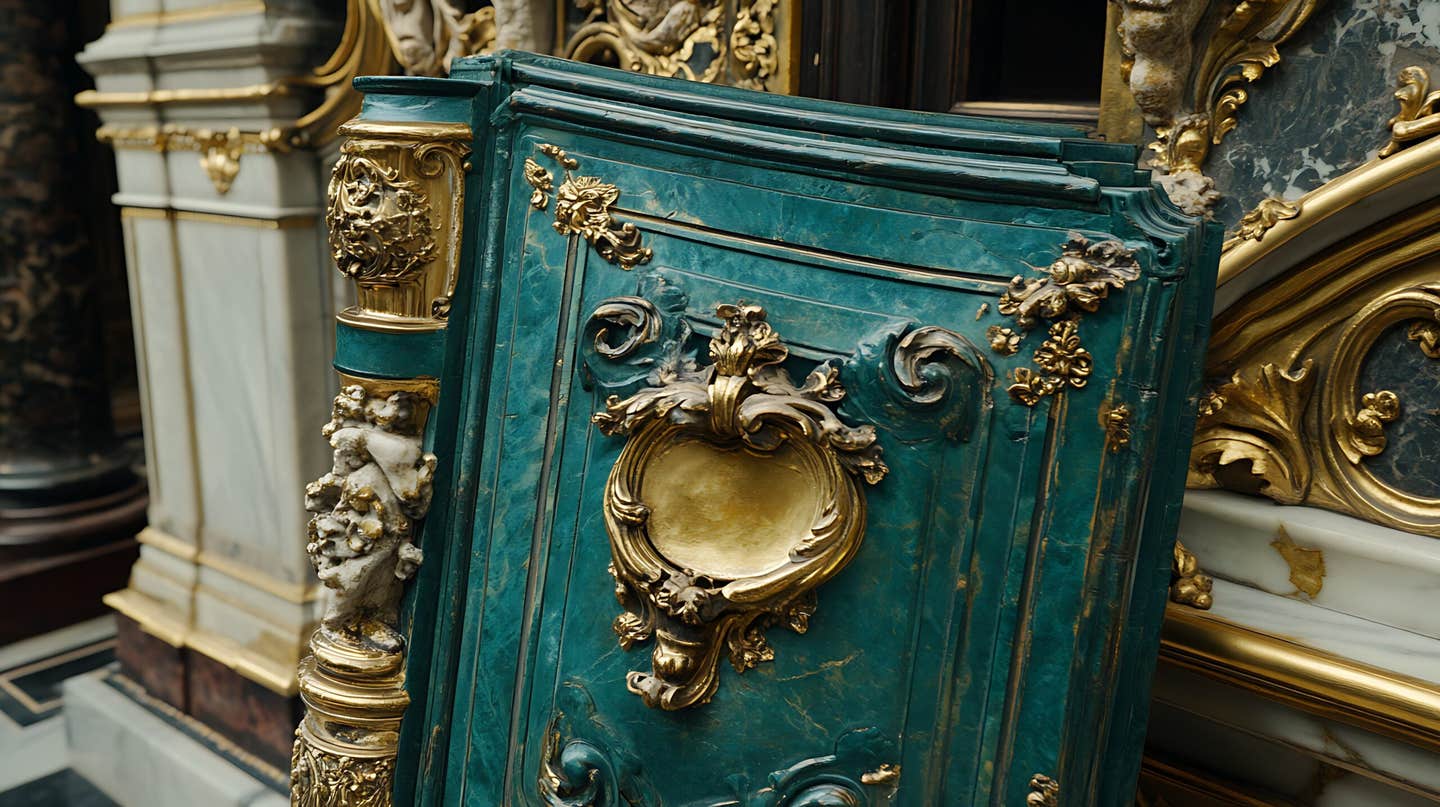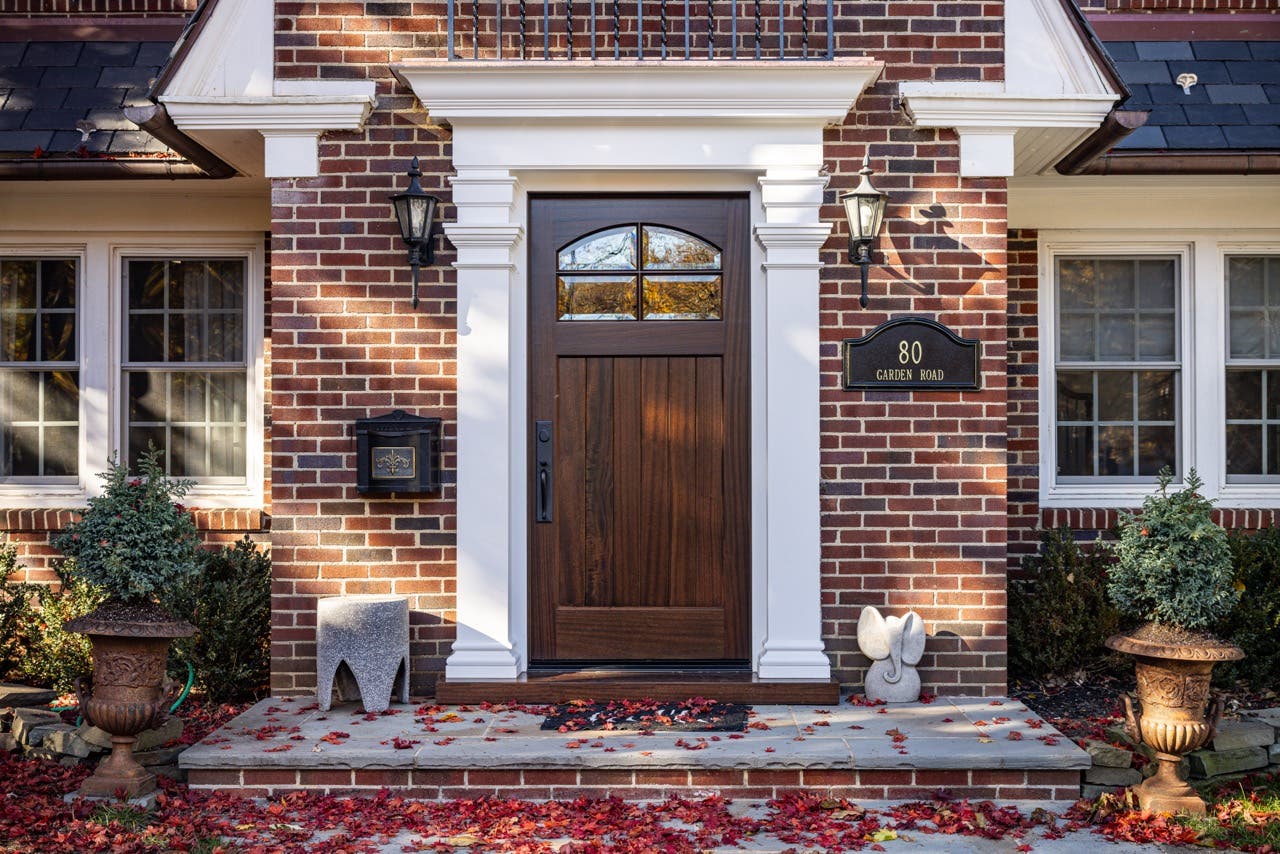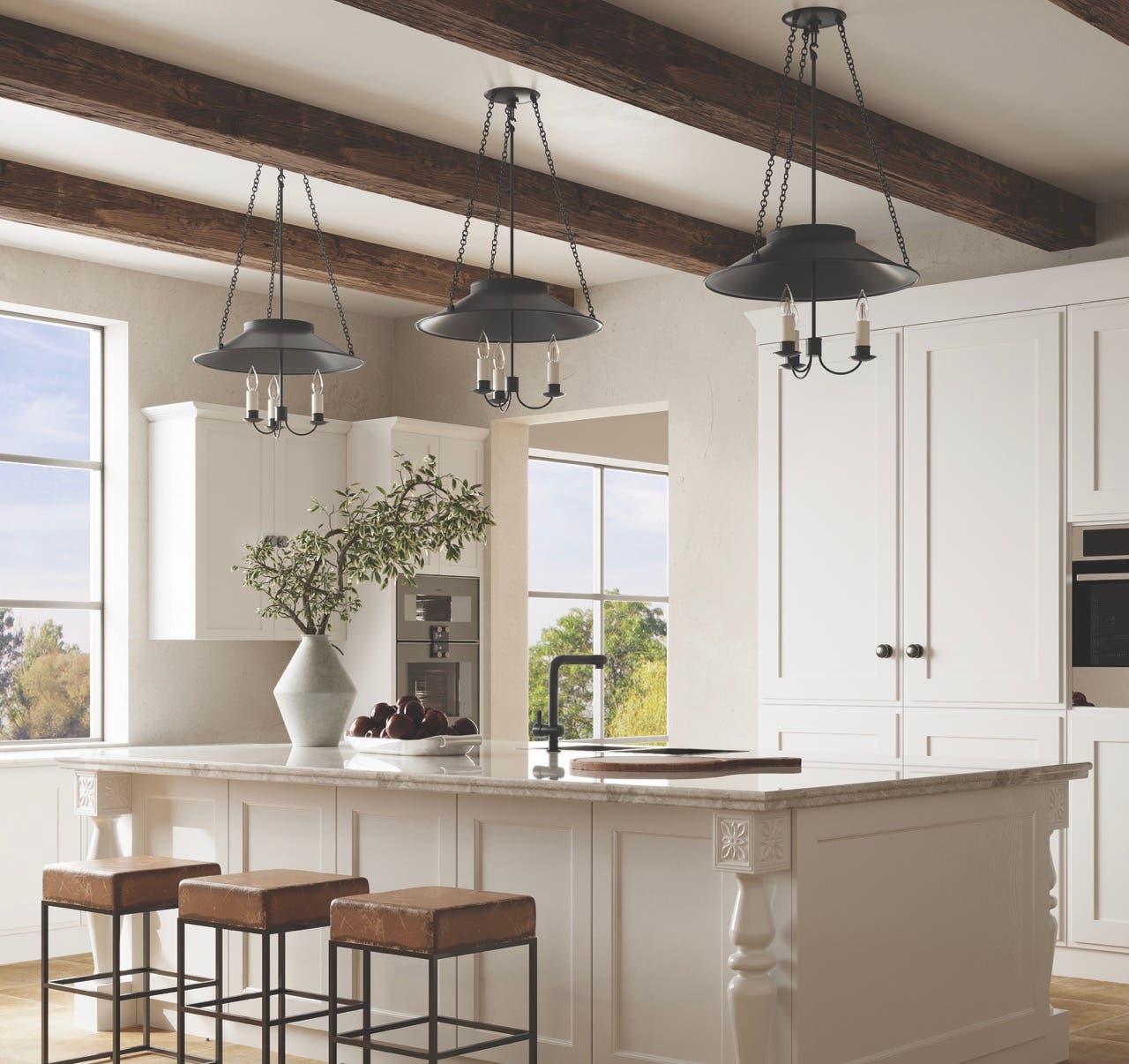
Product Reports
Primer on Plaster
The mention of plaster brings up visions of ornate brackets, ceiling medallions, and elaborate trim. Such decoration is applied to flat plaster, which must support the application of the decorative elements. But plaster as a building material has been used since the Neolithic period. As early as 7,500 BC, lime plasters were used in ‘Ain Ghazal in Jordan. The mix consisted of lime with crushed unheated limestone used on walls, floors, and hearths, while lime alone was applied to locally grown reeds as an armature for statues discovered there. In Egypt in 3700 BC, plaster was applied over woven straw lath inside the pyramid of Cheops. The plaster, with some of the murals still surviving, is intact today.
There are several types of plaster, known by either their cementitious component (lime, gypsum, clay, and cement) or by their finishing technique (smooth cast, rough cast, sand faced, pebble dash, scraped, depeter, and textured). Specialty techniques and ingredients provide additional characteristics of appearance or performance, such as Venetian plaster or Tadelakt.
History
Lime plaster is the most common historic plaster encountered. It’s made by burning limestone at temperatures above 1000 degrees Celsius, which dries out the stone, causing it to form quick lime. Adding water to quick lime (slaking) produces a non-hydraulic lime putty that is bright white in color. It cures slowly in air, absorbing carbon dioxide in a carbonation process whereby it achieves hardness. The long cure time makes lime plaster ideal to cover large areas without the problems of cold joints during application, which could cause cracking. The result is a strong, impact-resistant, smooth surface. The hardened lime plaster resists water somewhat but will deteriorate with prolonged exposure to moisture on its unfinished faces.
Gypsum plaster became popular in the late 1800s. Using naturally occurring gypsum found in layers in sedimentary rock, such as shale, gypsum is heated at 100°C to 120°C, reducing it to a white powder of calcined gypsum, known as Plaster of Paris. This fine plaster sets up very quickly but has little tensile strength or resistance to moisture. Gypsum plaster is a combination of Plaster of Paris, which has retarders to slow setting, and aggregate, such as perlite, sand, or vermiculite, to reduce shrinkage. Gypsum plaster provides a faster setting mixture than lime plaster with thinner coats, which makes it more economical, but the result is not as durable against impact or as resistant to moisture as lime plaster.
Clay plaster is not common in North America, although it is available commercially as bagged clay plaster. Clay is used in place of lime or gypsum to form a thicker plaster, which is moisture-regulating, absorbing or releasing ambient moisture to maintain a constant humidity. Clay plaster is unsuitable for exterior or bathroom/kitchen applications, as the unfired clay will dissolve with moisture exposure.
Cement plaster can be used on both the exterior and the interior of a building. Cement plaster consists of a mix of Portland cement and sand in a ratio of 1:4, with water added to reach the desired consistency. It is very hard, making it a very durable finish as long as details protect it from water streaming across the surface. The downside is that it is less flexible, and less permeable, and the final appearance is rough.


Current Applications
Historically, lime plaster contained lime putty and “reinforcement” such as straw or horsehair to improve its tensile properties. Plaster is applied over stone, masonry, wood lath (thin slats of wood that span between studs or joists, with gaps in between) or metal mesh. As the plaster is pressed against the rough stone, lath, or mesh, the plaster squeezes into the cavities, forming what is called a “key.” This is the first “scratch” coat, which is then roughened (scratched) when it is almost set, so that it keys with the second coat. A brown coat containing sand aggregate is applied next and roughened, then the top skim coat is applied with no sand or reinforcement, just smooth lime plaster. Each coat must cure for several days before the next layer is applied, making it a slow process.
With the commercialization of gypsum plaster, this became the preferred material, since it takes less time, is less costly, and provides a thinner finish. It does not provide the impact resistance of lime plaster, and is more susceptible to moisture deterioration than lime plaster.
Installation Types
Venetian Plaster is a slaked lime plaster that includes pigment. When marble dust is added, it achieves a hard, smooth, polished finish, typically polished with a steel trowel.
Tadelakt is a very old Moroccan plaster finish, composed of lime plaster and black soap made from olives. A chemical reaction (saponification) occurs between the ingredients that creates a waterproof membrane. Used in showers, baths, sinks, and tubs, it is durable and without grout lines. The downside is that its longevity is subject to very specific cleaning methods, because typical bathroom cleaners will destroy the water barrier.
Strengths and Weaknesses
Lime plaster is a durable, monolithic finish that resists impact and is vapor permeable. Due to its natural alkalinity, lime mortar is resistant to mold and mildew. Lime plaster is VOC free, and colorants are natural and VOC free. The process of plastering is dust free, and is versatile in the variety of finishes it can achieve. Modern applications of lime plaster can be gauged with gypsum or other pozzolans to improve the speed of curing. The drawback to lime plaster is its necessity for a three-coat application, resulting in a thicker finish, with long cure times between coats, which increases the scheduled time on site and therefore the cost.
Likewise, gypsum plaster is durable, monolithic, vapor permeable, and VOC free, and it sets quickly. The drawbacks of gypsum plaster are its lower impact resistance, its dustiness when sanding, its higher susceptibility to deterioration with moisture, lack of resistance to mold and mildew (due to its neutral pH), and, because of its rapid setting time, unsuitability for adding colorants for finishes such as Venetian plaster. Additives can slow the curing of gypsum plaster, improving its workability in process and its flexibility once cured, but it is still less durable than lime plaster.

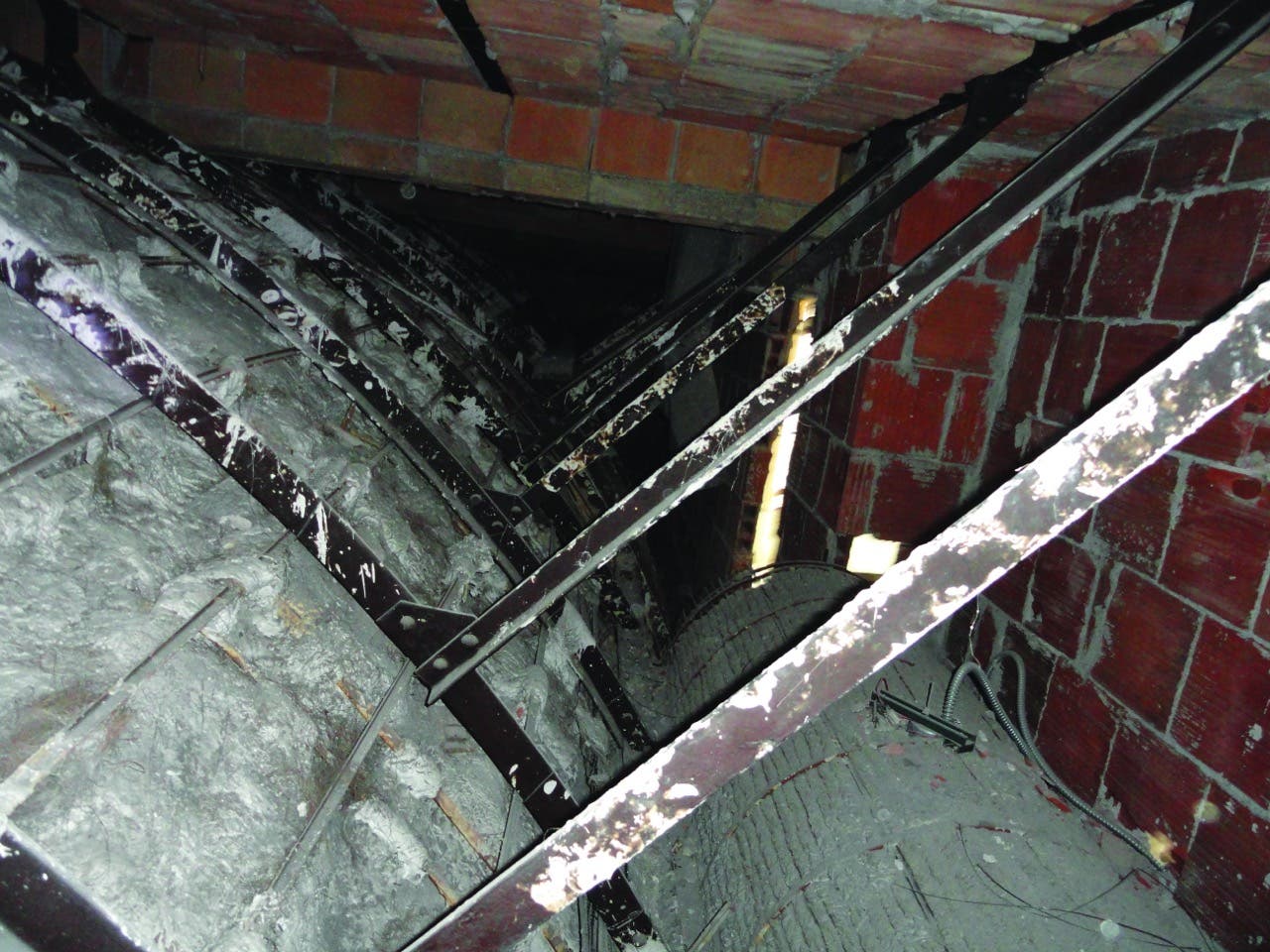
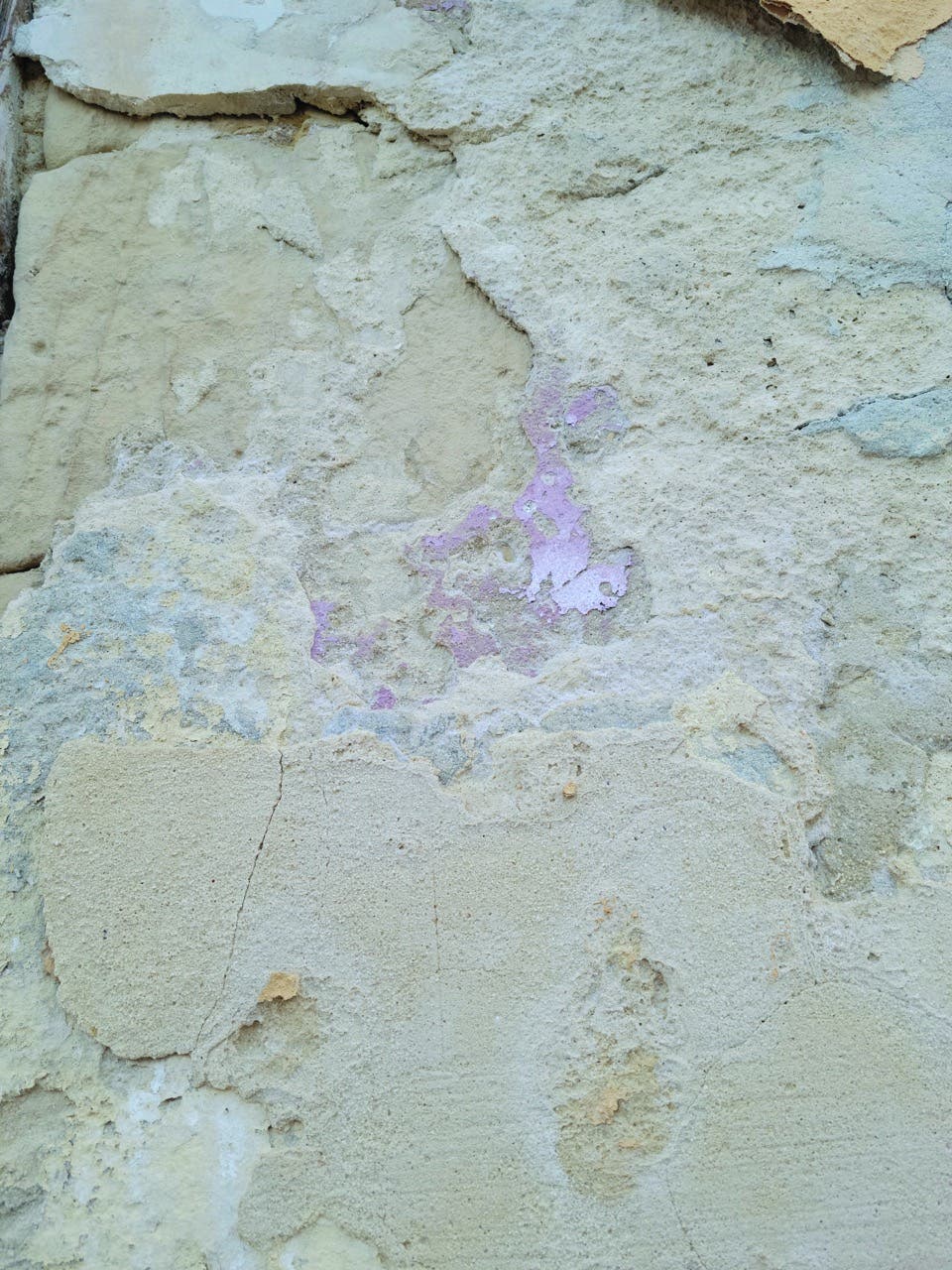

Typical Failures
When repairing lime plaster, as with any historic repairs, the cause of the problem must be understood before intervening with a repair. There are several common failures that are symptoms of larger issues.
Cracks in the plaster: If the building has differential movement, cracks in the structure will telegraph into the plaster. Attaching a “tell-tale” to the structure can monitor a crack to effectively monitor whether the building crack opens and closes with seasons, or if it is widening over time. Cracks may also form due to failure of the lath, such as when work above a ceiling causes impact damage.
Ceiling sagging: This can be caused by failure of lath by termites or overloading the lath of fasteners/gravity, causing the lath to sag. Vibrations or impact damage from above can cause a loss of key to the substrate, which cumulatively will permit the plaster plane to sag below the lath.
Efflorescence: When lime plaster is exposed to moisture over time, the plaster will exhibit swelling and a powdery white substance on the surface.
Recommended Repairs
After determining the cause of plaster damage, the cause must be remedied before the plaster repair is made.
Cracks need to be stable before they are repaired. Determine if a crack has stopped moving by monitoring a “tell-tale” over a year’s time. Once stable, repairs can begin. First, address any structural issues. Next, review the plaster substrate—is the lath broken or corroded? Failing lath needs to be patched with matching lath, although stainless steel should be used for fasteners and metal lath. Next, the cracks must be routed out to a sufficient width and depth and all dust removed from the surfaces. The application of repair plaster must be a type that matches the plaster substrate. If gypsum plaster is used to patch lime plaster, there can be a lack of bond, and the flexing of the lime plaster may cause cracks in brittle gypsum repairs. If lime plaster is used to repair gypsum plaster, the moisture in the lime plaster can cause efflorescence of the gypsum before it is fully cured, and may fail to bond.
To repair a sagging ceiling, an immediate response may be to shore it with a sheet of plywood with rigid struts below it, but this is not advisable. Trapped broken lath and debris on the back side of the plaster could cause further damage as the ceiling plane is forced upward. If the top side is accessible, the debris can be removed, and the ceiling raised up by attaching straps to the lath that can secure it to the structure. If access to the top side is not possible, the ceiling may be carefully and incrementally raised over time, using multiple locations of small pads with individual supports that distribute the force over the entire ceiling. Once the plaster ceiling is in the desired plane, the plaster can be secured to the structure above using long stainless-steel screws and washers that are sunk flush to the plaster surface. These locations are then patched and painted.
When efflorescence occurs, there is a source of moisture that must be removed. This could be a roof leak, a plumbing leak, a sealant failure, or condensation due to a lack of insulation. Once the cause is remedied, the affected plaster must be removed, and the substrate dried out. Any damage to the substrate must be repaired (rotted boards cut out, failed mortar replaced, mold abated) before the plaster is reapplied. As with a crack repair, the patching material ought to match the composition of the plaster.
Cautions
Plaster damage is typically a symptom of a larger problem. The cause of the damage needs to be determined, and that cause remedied before any repairs to the plaster are undertaken, or even the best repairs will fail. Repairs to plaster should be performed by professionals who can determine the composition of the plaster and make repairs that retain the historic appearance and maximum historic fabric. Inexpert repairs can scar the appearance, cause additional loss of historic fabric, and will waste money. TB
Susan D. Turner is a Canadian architect specializing in historic preservation of national registered buildings. She is the Senior Technical Architect for JLK, a woman-owned business specializing in the repair and preservation of historic buildings. She can be reached at sturner@jlkarch.com



